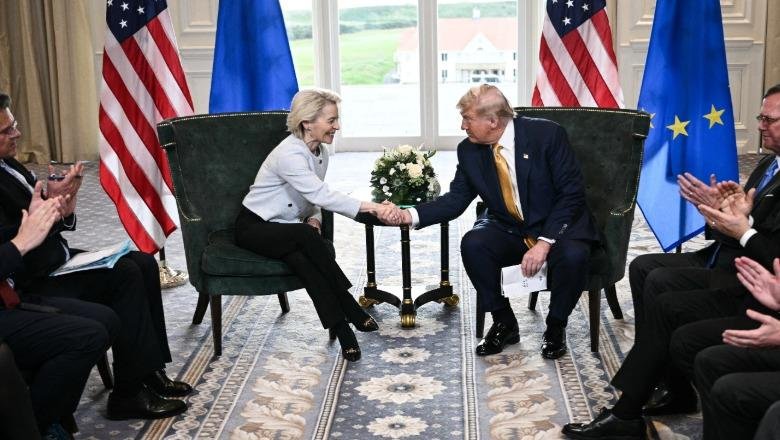A trade agreement described as the largest ever between the United States and the European Union has been reached following talks in Scotland, shaking global markets and sparking heated political debate. Announced by US President Donald Trump and European Commission President Ursula von der Leyen, the deal currently serves more as a framework than a finalized contract, with many key details still unclear.
Even so, the framework is enough for analysts to identify some clear winners and losers.
With this agreement, Trump has delivered on one of his major campaign promises — to secure a landmark trade pact for the US. Initial analyses suggest that the EU has made more concessions. Economists at Capital Economics predict a 0.5% decline in Europe’s GDP, while the US is expected to gain tens of billions of dollars through new import tariffs. But the real test lies in the upcoming economic data — inflation, employment, and consumer confidence figures due this week will show whether Trump’s trade strategy is paying off.
Ordinary Americans could feel this deal in their wallets. A new 15% tariff on goods from the EU means immediate price increases: a product that once cost $100 will now cost $115, passing the burden directly to the consumer.
Stock markets in Asia and Europe reacted positively. The clarity — however partial — has reassured investors. Analysts note that the 15% tariff is lower than expected, which has helped boost the euro and major indices.
The deal still needs approval from all 27 EU member states. Reactions across Europe have revealed sharp divisions — from Germany’s caution to France’s anger. French Prime Minister Francois Bayrou called it a “dark day for Europe,” while Hungarian Prime Minister Viktor Orban bluntly remarked that “Trump ate von der Leyen for breakfast.”
Tariffs on European cars exported to the US were cut to 15% from 27.5%, but this remains a significant burden for Germany’s powerful auto industry. The VDA, Germany’s automotive association, has warned the tariff could cost the industry billions each year.
Meanwhile, tariffs on American cars sold in Europe were cut from 10% to 2.5%, giving US automakers a boost — though complications remain. Cars partially manufactured outside the US may face steep return tariffs, undermining some of the benefit.
Uncertainty surrounds whether pharmaceuticals are included. While von der Leyen claims they are, Trump has said otherwise. Whichever version prevails, Europe’s pharmaceutical sector — with key products like Ozempic — appears unlikely to secure its much-desired tariff exemption.
One of the deal’s biggest pledges: the EU will buy $750 billion worth of US energy, including LNG, oil, and nuclear fuel — a major step toward cutting EU dependence on Russian energy and deepening transatlantic cooperation.
Aircraft parts and planes will be exempt from tariffs, safeguarding supply chains for giants like Airbus and Boeing. This aspect of the deal is seen as a model for future “zero-for-zero” agreements in other sectors, including wines and spirits.
For the US, the agreement is a diplomatic success and a positive signal to markets, but for Europe, it raises more questions than answers. With many states still undecided and key sectors exposed, the bloc now faces a new challenge: how to protect its interests without deepening internal divisions.







